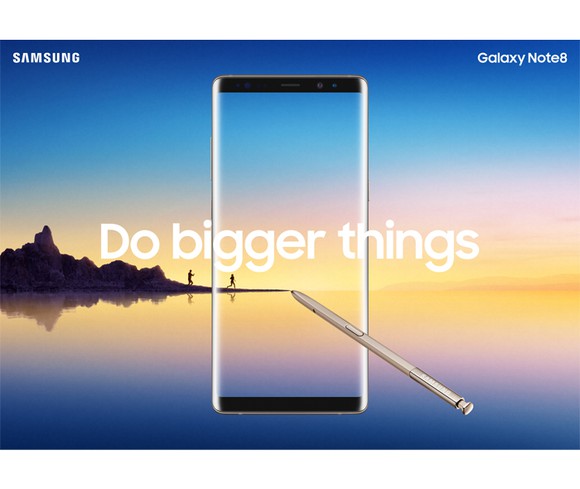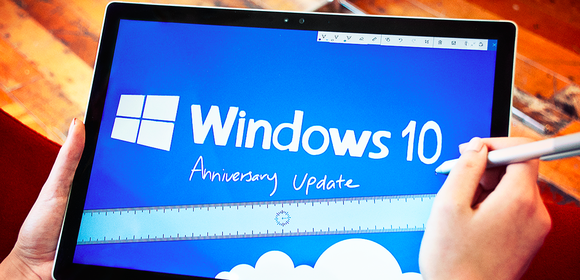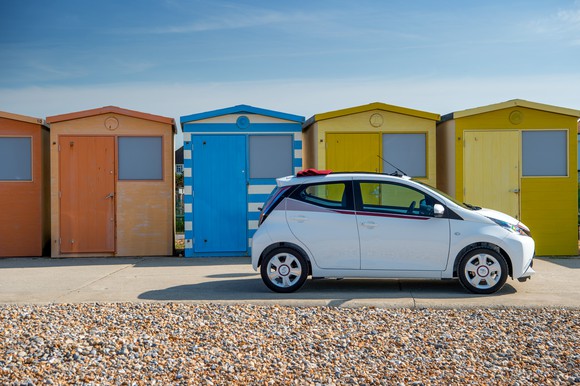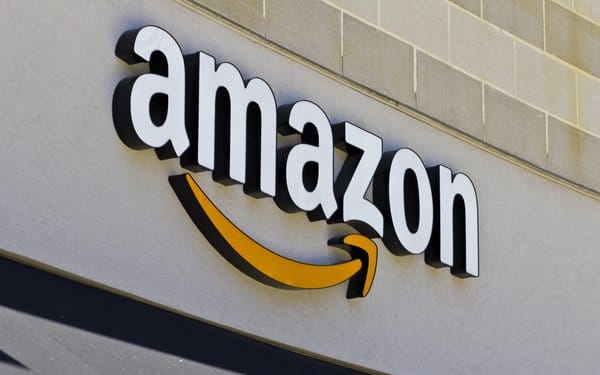Interbrand ranked companies based on 10 factors, including engagement, relevance, authenticity, and governance. To see which companies take up the Top 10 spots on the list, keep reading.

IBM has created a brand that represents the technology of the future. Image source: IBM.
10. IBM
Brand Value: $46.8 billion
Social Impact: 954,757 Facebook likes
While IBM (NYSE:IBM) rounds out the Top 10 brands list, its value has actually slipped 11% just from last year. IBM’s brand value has been on a steep downturn since it peaked in 2013, at $78.8 billion, according to Interbrand. In the past five years, IBM’s stock has fallen about 20% as the company has been transitioning its focus from traditional hardware to a software as a service business, focusing on artificial intelligence and cloud computing.
Billionaire investor Warren Buffett’s Berkshire Hathaway owned about 81 million shares of IBM at the end of 2016 but cut that to about 54 million shares in the first half of 2017. “I don’t value IBM the same way that I did six years ago when I started buying… I’ve revalued it somewhat downward,” Buffett said in an interview on CNBC.

Mercedez-Benz customers have high expectations from the luxury brand. Image source: Mercedes-Benz.
9. Mercedes-Benz
Brand Value: $47.8 billion
Social impact: 20.8 million Facebook likes
Luxury-car company Mercedes-Benz, represented by its three-pointed star in a laurel wreath, has seen its brand value steadily increase since 2009 when it was worth about $24 billion. Mercedes Benz is owned by Daimler AG (NASDAQOTH:DDAIF), whose stock has risen an incredible 60% in the past five years.
“The Mercedes-Benz brand stands for the aspiration to deliver ‘The best’ in terms of products, technology and services,” the company writes on its website.

Facebook’s brand has helped it rack up over2 billion users. Image source: Facebook.
8. Facebook
Brand Value: $48.2 billion
Social Impact: 191.2 million Facebook likes
Facebook (NASDAQ:FB) claimed a spot on the Top 10 list for the first time this year. The Menlo Park, California-based social-media, and tech company also boasted the highest growth over last year out of all companies on the Top 10 list. Facebook’s value increased an incredible 48% over the past year, securing it the No. 8 most valuable brand position.
Facebook has a powerful reach, reporting an incredible 2 billion monthly active users (MAUs) for the first time last quarter. And Facebook also owns Instagram, which now has over 800 million MAUs. In comparison, Snap Inc.’s Snapchat reported a more modest 330 million MAUs last quarter.
The combined popularity of its platforms has helped Facebook achieve between 39% and 61% revenue growth each quarter for the past three years. Last quarter, it raked in $9.32 billion in revenue.

Toyota cars are seen as reliable and affordable. Image source: Toyota.
7. Toyota
Brand Value: $50.3 billion
Social Impact: 3.6 million Facebook likes
Toyota‘s (NYSE:TM) brand value rose from 2010 to 2016, when it peaked at $53.6 billion. Since last year, Toyota’s brand value has slipped 6%. While Toyota’s sales have increased, its performance has been weighed down by the strength of the Japanese yen.
This past June, the Japan-based automaker was named the most valuable car company in the BrandZ Top 100 Most Valuable Global Brands study conducted by market research firm Kantar Millward Brown. Toyota has held the number one spot for 10 of the 12 years the firm has released the study.
Global BrandZ director Peter Walshe told Automotive News Europe:
Toyota is seen as a reliable, quality value brand. Even when it was going through its recall problems, the users were saying, ‘What’s all the fuss about, my car is fine.’ Toyota has delivered great value for years.

Samsung has created a global electronics brand. Image source: Samsung.
6. Samsung
Brand Value: $56.2 billion
Social Impact: 4 million Facebook likes
Samsung (NASDAQOTH:SSNLF) moved up a spot on the Top 10 list this year after seeing its brand value increase by 9% in 2017. The South Korea-based company’s performance is particularly impressive as the past year includes the disastrous Galaxy Note 7 episode. The device was known to heat up or explode due to battery issues and led to the company’s biggest recall in history.
Despite the setback, Samsung sprang back into action with the successful launch of the Galaxy S8 in April. At a July media event, Samsung’s mobile division chief Koh Dong-Jin said the Galaxy S8 had outsold its predecessor, the Galaxy S7, by 15% in the same three-month period after launch.
Executive Vice President of Global Marketing, Young-Hee Lee said in a statement: “Our efforts to make meaningful progress to improve people’s lives contributed to the rise in brand value. Our ranking this year is a positive sign that demonstrates our efforts to regain trust have resonated with global consumers.”

Amazon’s brand is all about delighting its customers by making shopping easier and cheaper for them. Image source: Amazon.
5. Amazon
Brand Value: $64.8 billion
Social Impact: 28 million Facebook likes
Despite being a household name, this is only Amazon’s (NASDAQ:AMZN) second year on BrandZ’s Top 10 list. The online retailer seems to permeate every area of consumers’ lives. This past June, Amazon scooped up Whole Foods and plans to transform the grocery experience for shoppers. Already, Amazon has decreased the prices of certain items at the traditionally more pricey grocer.
Amazon’s popular range of smart-speaker devices — including the Amazon Echo and the Amazon Dot — allows shoppers to easily access more of the company’s products and services. The e-commerce giant is also diving head first into video content, using Amazon Prime Video to improve the value proposition for consumers to become Amazon Prime members. The company will spend an estimated $6 billion on content in 2017, Wedbush Securities Inc. analyst Michael Pachter wrote in a note to analysts.
With Amazon taking over the retail space and steadily making a name for itself in the grocery and content space, it’s easy to see why Amazon is in the top five most valuable brands.

Coca-Cola has created a “cool” beverage brand. Image source: Coca-Cola.
Brand Value: $69.7 billion
Social Impact: 105.9 million Facebook likes
While you might think Coca-Cola (NYSE:KO) is at the top of its game at No. 4 on BrandZ’s list, its value has actually been steadily dropping since 2014 when it peaked at $81.6 billion. Just in the past year, the beverage company has lost 5% of its brand value.
Coca-Cola has taken a hit from the trend to opt for healthier choices, including fruit juices, teas, and artisan coffees. Certain countries, including the U.K. and Mexico, have even added sugary-drink taxes to reduce the consumption of beverages with added sugar.
In defense of the health-conscious trend, Coca-Cola has turned to non-carbonated beverages. For the latest quarter, Coca-Cola reported a 3% rise in sales in North America, mostly due to its line of teas, ready to drink cold coffees, and Sprite.

Microsoft is headquartered in Redmond, Washington, but its computer software is used worldwide. Image source: Microsoft.
3. Microsoft
Brand Value: $69.7 billion
Social Impact: 105.9 million Facebook likes
Apple rival Microsoft‘s (NASDAQ:MSFT) brand value has been steadily rising since 2014, even jumping an impressive 10% just in the past year, during which time it acquired professional networking site LinkedIn. Since Satya Nadella became CEO in 2014, he has worked to create a more open relationship with other companies, including working with Apple, IBM, and Salesforce.
The company is focusing more and more on its cloud arm, Azure. For the latest quarter, Microsoft’s commercial cloud business grew 56% and hit an annualized rate of $20.4 billion in sales.
Jeff Hansen, General Manager of Branding for Microsoft, said in a statement that the company is “excited” about its position on the list. “Our brand value is a testament to our customer obsession and the amazing things our customers accomplish every day,” he said.

Google’s brand is powerful as the No. 1 search engine in the world. Image source: Google.
2. Google
Brand Value: $141.7 billion
Social Impact: 24 million Facebook likes
It’s no surprise to see Google (NASDAQ:GOOGL) at No. 2 on the BrandZ list because it’s held onto this position for the past five years. The search titan has seen steady growth in its brand value since the study was started, and saw a 6% increase in the past year.
Google remains largely unchallenged in the search-engine space. In 2016, Google took home 75.8% of the search ad market, which translates into about $24.6 billion in revenue. By 2019, Google is anticipated to have 80.2% market share of the search ad market, according to market research firm eMarketer.

Apple’s brand has helped it achieve a market cap of over $800 billion. Image source: Apple.
1. Apple
Brand Value: $184.2 billion
Social Impact: 8.4 million Facebook likes
Like Google, Apple (NASDAQ:AAPL) has held the same position on the BrandZ list for the past five years. The company’s brand value really took off after 2008, the year the first iPhone came out. Since 2008, the company’s brand value has increased from $13.7 billion to $184.2 billion.
Apple’s “cool” brand, sticky ecosystem, and commitment to quality mean consumers are willing to pay more its devices. On Oct. 27, Apple started presales for its most expensive phone yet, the iPhone X, which starts out at $999.
Apple is just a tech company, but it doesn’t have just consumers — it has fans. People line up for days to get their hands on the latest iPhone before it sells out.
The late co-founder of Apple, Steve Jobs, was instrumental in creating the branding around Apple as not just a tech company, but a company that sold devices which enable you to fulfill your dreams and creative visions. Jobs once said during a speech about branding.
Marketing is about values. It’s a complicated and noisy world, and we’re not going to get a chance to get people to remember much about us. No company is. So we have to be really clear about what we want them to know about us.
Should Apple be on your buy list? It’s on ours…
Motley Fool co-founders Tom and David Gardner have spent more than a decade beating the market. In fact, the newsletter they run, Motley Fool Stock Advisor, has tripled the S&P!*
Tom and David just revealed their ten top stock picks for investors to buy right now. Apple made the list — but there are 9 other stocks you may be overlooking.















/GettyImages-143134495-59e6546dc41244001156bf05.jpg)
/GettyImages-527518908-59e6555fb501e80011c93f08.jpg)
/GettyImages-450831354-59e655e5519de200125fd890.jpg)
/GettyImages-690815-59e6564f685fbe0011fc0e0f.jpg)
/GettyImages-672894574-59e656990d327a001086b3a9.jpg)
/GettyImages-694228378-59e656d5845b340011c08a9d.jpg)
/GettyImages-634445388-59e65722c412440011579f2c.jpg)
/GettyImages-835672972-59e6581f845b340011c0f308.jpg)















